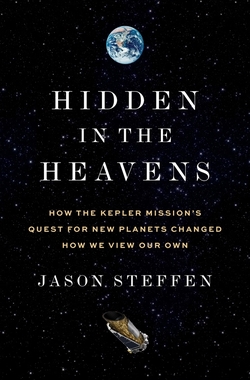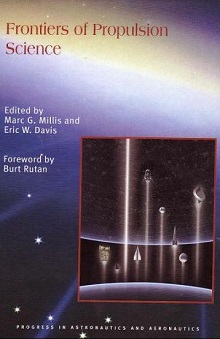Ongoing projects like JHU/APL’s Interstellar Probe pose the question of just how we define an ‘interstellar’ journey. Does reaching the local interstellar medium outside the heliosphere qualify? JPL thinks so, which is why when you check on the latest news from the Voyagers, you see references to the Voyager Interstellar Mission. Andreas Hein and team, however, think there is a lot more to be said about targets between here and the nearest star. With the assistance of colleagues Manasvi Lingam and Marshall Eubanks, Andreas lays out targets as exotic as ‘rogue planets’ and brown dwarfs and ponders the implications for mission design. The author is Executive Director and Director Technical Programs of the UK-based not-for-profit Initiative for Interstellar Studies (i4is), where he is coordinating and contributing to research on diverse topics such as missions to interstellar objects, laser sail probes, self-replicating spacecraft, and world ships. He is also an associate professor of...
A Role for Comets in Europa’s Ocean?
The role comets may play in the formation of life seems to be much in the news these days. Following our look at interstellar comets as a possibly deliberate way to spread life in the cosmos, I ran across a paper from Evan Carnahan (University of Texas at Austin) and colleagues (at JPL, Williams College as well as UT-Austin) that studies the surface of Europa with an eye toward explaining how impact features may evolve. Craters could be cometary in origin and need not necessarily penetrate completely through the ice, for the team's simulations of ice deformation show drainage into the ocean below from much smaller events. Here comets as well as asteroids come into play as impactors, their role being not as carriers of life per se but as mechanisms for mixing already existing materials from the surface into the ocean. Image: Tyre, a large impact crater on Europa. Credit: NASA/JPL/DLR. That, of course, gets the attention, for getting surface oxidants produced by solar irradiation...
The Ethics of Directed Panspermia
Interstellar flight poses no shortage of ethical questions. How to proceed if an intelligent species is discovered is a classic. If the species is primitive in terms of technology, do we announce ourselves to it, or observe from a distance, following some version of Star Trek's Prime Directive? One way into such issues is to ask how we would like to be treated ourselves if, say, a Type II civilization - stunningly more powerful than our own - were to show up entering the Solar System. Even more theoretical, though, is the question of panspermia, and in particular the idea of propagating life by making panspermia a matter of policy. Directed panspermia, as we saw in the last post, is the idea of using technology to spread life deliberately, something that is not currently within our power but can be reasonably extrapolated as one path humans might choose within a century or two. The key question is why we would do this, and on the broadest level, the answer takes in what seems to be...
Life from Elsewhere
The idea that life on Earth came from somewhere else has intrigued me since I first ran into it in Fred Hoyle's work back in the 1980s. I already knew of Hoyle because, if memory serves, his novel The Black Cloud (William Heinemann Ltd, 1957) was the first science fiction novel I ever read. Someone brought it to my grade school and we passed the copy around to the point where by the time I got it, the paperback was battered though intact. Its cover remains a fine memory. I remember being ingenious about appearing to be reading an arithmetic text in class while actually reading the Hoyle novel. In the book, the approach of a cloud of dust and gas in the Solar System occasions alarm, with projections of the end of photosynthesis as the Sun's light is blocked. Even more alarming are the unexpected movements of the cloud once it arrives, which suggest that it is no inanimate object but a kind of organism. I've been meaning to re-read The Black Cloud for years and this post energizes me...
Interstellar Communications: The Pointing Problem
Some topics just take off on their own. Several days ago, I began working on a piece about Europa Clipper's latest news, the installation of the reaction wheels that orient the craft for data return to Earth and science studies at target. But data return is one thing for spacecraft working at radio frequencies within the Solar System, and another for much more distant craft, perhaps in interstellar space, using laser methods. So spacecraft orientation in the Solar System triggered my recent interest in the problem of laser pointing beyond the heliosphere, which is acute for long-haul spacecraft like Interstellar Probe, a concept we've recently examined. Because unlike radio methods, laser communications involve an extremely tight, focused beam. Get far enough from the Sun and that beam will have to be exquisitely precise in its placement. So let's take a quick look at Europa Clipper's methods for orienting itself in space, and Voyager's as well, and then move on to how Interstellar...
Europa’s Patchy Plate Tectonics
I keep an eye on recent findings about Europa because fine-tuning procedures for the science that missions like Europa Clipper and JUICE (Jupiter Icy Moons Explorer) will perform at the Jovian moon is an ongoing process that doesn’t stop at launch. The more we learn now – the more anomalies we uncover or processes we begin to glimpse – the better able we’ll be to adjust spacecraft observing strategies to go after the answers to these phenomena. A new study teaches us a bit more about Europa’s plate tectonics, the only solid evidence of tectonics we know of other than Earth’s. And it will take new high-resolution imagery to confirm the theories put forth within it. Appearing in the Journal of Geophysical Research: Planets, the paper looks at the processes that evidently govern the evolution of the fractured Europan surface the Galileo mission revealed to us back in the 1990s. What’s intriguing here is the identification of Europan tectonic plates in the context of deep time. If a...

